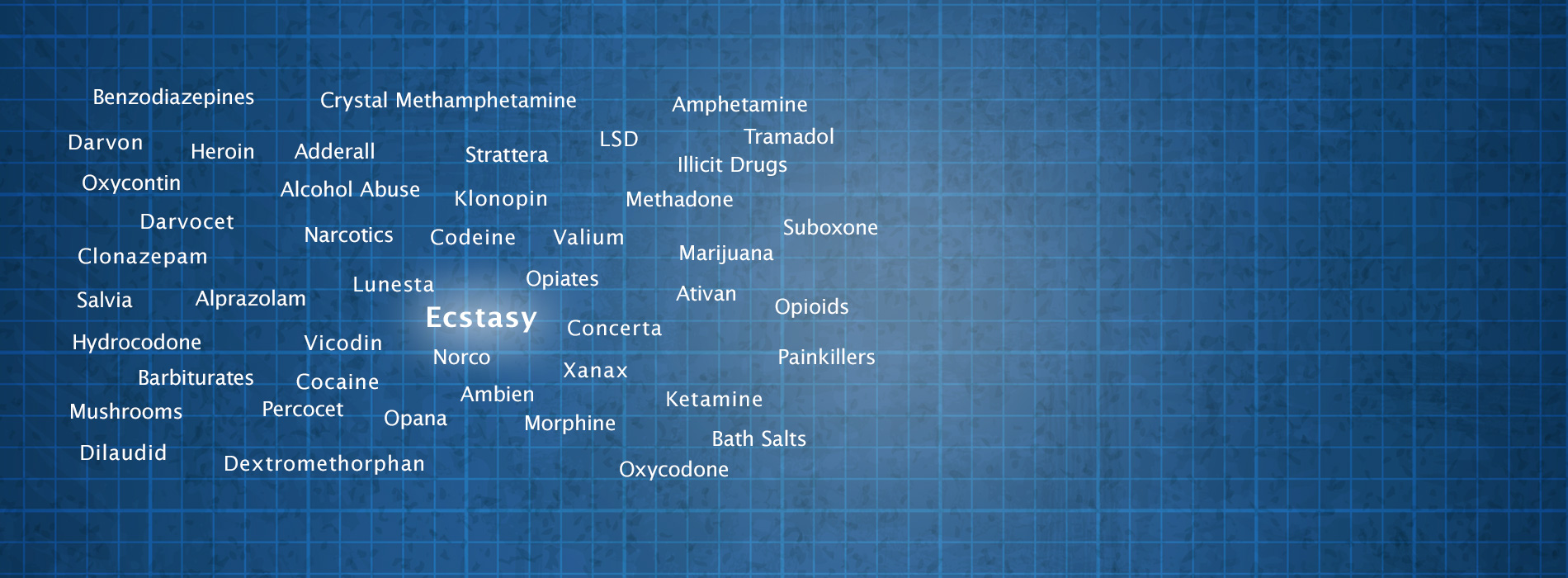Ecstasy
Methylenedioxymethamphetamine (MDMA or Ecstasy) is a psychoactive synthetic drug that is very much like methamphetamine and mescaline (a hallucinogen). The street names for Ecstasy include the love drug, Adam, XTC, Beans, and hug drug. This is an illegal substance, as it works as a psychedelic and a stimulant to produce distorted perception, enhanced enjoyment of regular experiences, and an energizing effect. Ecstasy works on the brain, using the chemical serotonin to excite neurons. This chemical is responsible for sleep, sexual activity, aggression, mood, and pain sensitivity. Ecstasy is said to be neurotoxic and dangerous to the health. On rare incidences, it has caused death.MDMA is usually taken as a capsule or tablet by mouth. The slang term Molly stands for “molecular,” which indicates the pure crystalline powder form of Ecstasy and comes in capsules. The effects of this substance last anywhere from three to six hours, but some users take a second dose so they do not “fade.” Ecstasy is often used by some urban gay bisexual men along with erectile-dysfunction drugs, such as Viagra.
Health Hazards and Effects
Common Ecstasy withdrawal symptoms include loss of appetite, depressed mood, fatigue, and difficulty with concentration. Also, chronic users consistently perform worse than nonusers on memory and cognitive tests. When used in combination with other drugs, research indicates there can also be considerable cognitive decline. For those who take high doses of Ecstasy, physical effects include:
- Sharp increase in body temperature
- Liver, kidney, and/or cardiovascular system failure
- Increased heart rate and blood pressure
- Muscle tension and teeth clenching
- Chills, sweating, and faintness
- Blurred vision
- Confusion
- Severe anxiety
- Depression
- Sleep problems
Hidden Risks
Researchers are still studying Ecstasy, and believe it to have addictive properties. Some users experience:
- Withdrawal – Symptoms that occur when regular drug use is stopped or reduced, such as depression, fatigue, mood swings, and difficulty concentrating.
- Dependence – Continued use despite the knowledge of danger and harm.
- Tolerance – The need for more and more of the substance to experience the same “buzz” or “high.”
Incidence and Prevalence of Ecstasy Use
The National Institute on Drug Abuse (NIDA) conducted a recent survey in 2010. They found that more than four percent of 10th, 11th, and 12th-graders used Ecstasy within the past year. The survey also found that higher rates of use occurred among White and Hispanic students. Also, the Substance Abuse and Mental Health Services Administration (SAMHSA) produced a study that showed the average age of first use of this drug occurred around 19 years. Also, 695,000 American teens and adults were current Ecstasy users, meaning it was taken within 30 days prior to the survey.
The National Institute on Drug Abuse

